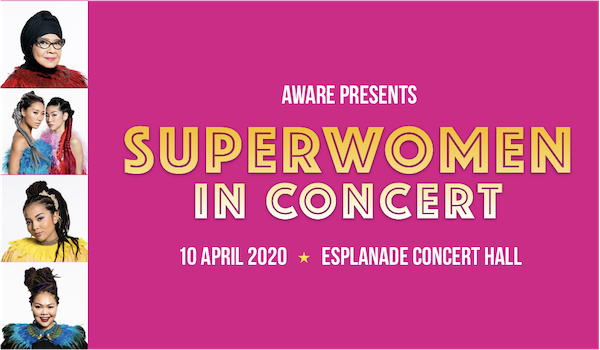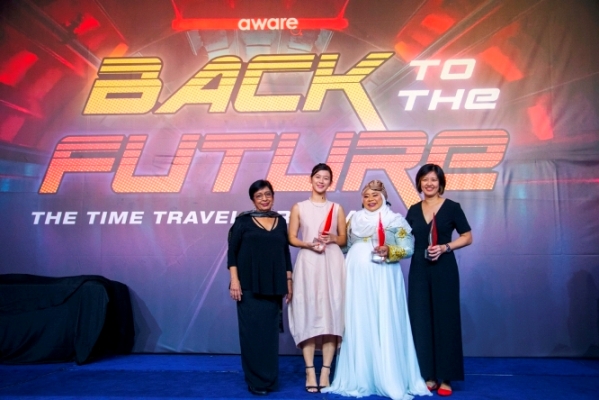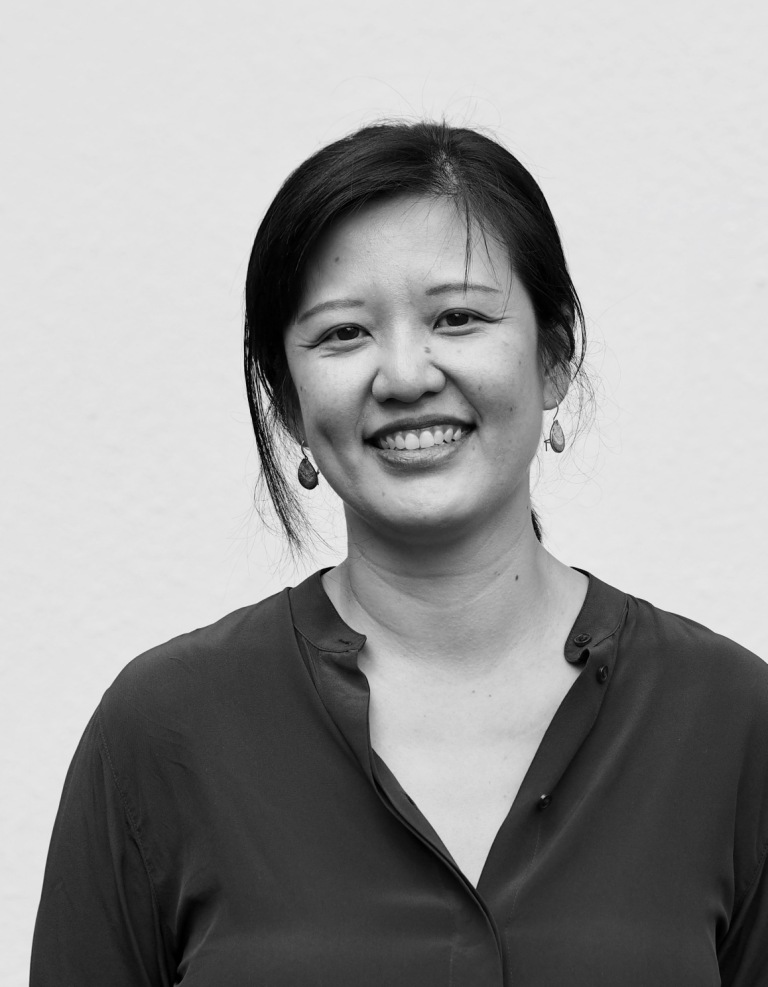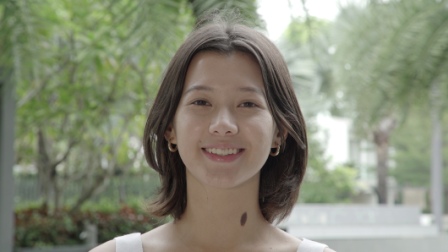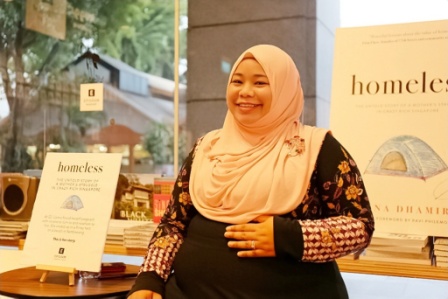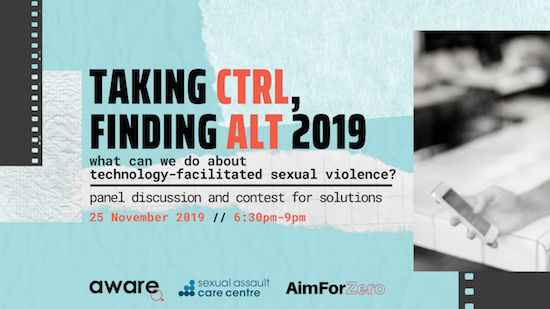This post was originally published as a press release on 25 November 2019.
25 November 2019 – Gender-equality group AWARE announced today that its Sexual Assault Care Centre (SACC) has seen an overall rise in cases across three years involving technology-facilitated sexual violence, from 47 in 2016 (out of 338 total cases), to 88 in 2017 (out of 515 total cases) and 118 in 2018 (out of 808 total cases).*
These are cases that involved actions enabled by digital communications technology, such as social media and messaging platforms, digital cameras and dating apps. These behaviours range from unwanted and explicit sexual messages and calls (including attempts to coerce sex or a relationship), to a specific category of image-based sexual abuse.
● Image-based sexual abuse (IBSA) is the non-consensual creation, obtainment and/or distribution of sexual images or videos of another person. It also includes threats to carry out the above. These images can be so-called “nudes” taken with the subject’s consent as well as images taken without the subject’s knowledge (e.g. via “upskirting” and placing hidden cameras in public places). IBSA cases seen by SACC doubled over the three years, from 30 in 2016 to 64 in 2018.
● Technology-facilitated sexual violence can be committed by anyone (acquaintances, family members, colleagues, intimate partners or even strangers). Almost half of IBSA cases seen from 2016-2018 were committed by an intimate partner. On the other hand, perpetrators of unwanted or explicit communication were likely to be someone in the survivor’s workplace (close to 40%). The perpetrator profile, where known, cut across age, class, educational background and race.
● From 2016 to 2018, 1 in 2 IBSA survivors reached out to SACC within one month of the incident (with 25% reaching out within 72 hours of the incident). This is unusually fast for cases seen by the centre — in 2018, for example, 58% of cases came to SACC within a year of the incident.
● Of the cases known to SACC over these three years, 1 in 2 IBSA survivors made a police report — a higher proportion than overall SACC cases, of which only 30% report their incident to any authority.
These statistics were presented by Head of SACC Anisha Joseph at the event “Taking Ctrl, Finding Alt 2019”, which took place Monday evening at Lifelong Learning Institute in Paya Lebar. With approximately 150 attendees, the event marked both the International Day for the Elimination of Violence Against Women, and the one-year anniversary of AWARE’s Aim For Zero campaign against sexual violence.
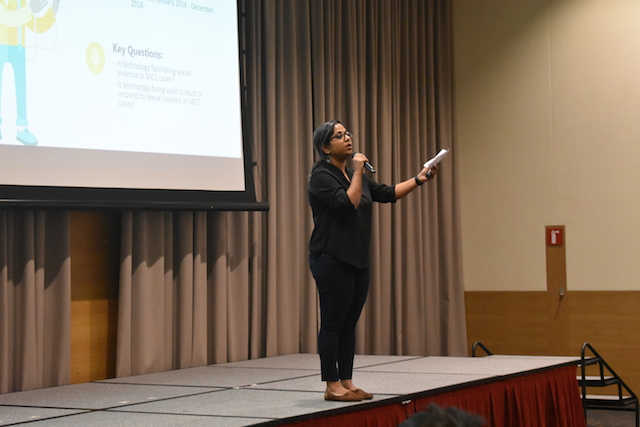
Said Ms Joseph: “The conversation and media coverage on sexual violence in Singapore this year has largely been dominated by technology-facilitated sexual violence, from numerous incidents taking place on university campuses, to Telegram groups created for the dissemination of explicit images. We believe that public awareness of this issue — and public urgency to curb it — has never been higher.”
“Technology is not the villain here,” she added. “It is not the cause of sexual violence, but a medium through which violence is facilitated by perpetrators—we see it ‘folded into’ pre-existing practices of violence, harm and harassment. New factors — such as the widespread availability of recording technology, and our 24/7 channels of communication — make these actions all the more pervasive and damaging today.”
The “Taking Ctrl, Finding Alt 2019” event comprised a panel discussion featuring speakers Monica Baey, Amber Hawkes, Benny Bong and Priscilla Chia. Lim Xiu Xuan, a senior case manager at SACC, served as moderator.
The discussion covered the psychological and practical impact of tech-facilitated sexual violence on survivors, as well as the recourse options available to them under the Penal Code and Protection From Harassment Act. Ms Hawkes also gave an overview of Facebook’s policies for user safety, and walked attendees through the process of reporting a violation to the social media platform. However, panelists agreed that there are limitations to survivors’ abilities to contain the spread of images once they are uploaded, and limitations on how accountable perpetrators are across platforms.
“At Facebook, we take a comprehensive approach to making our platform a safer place for women, including writing clear policies and developing cutting-edge technology to prevent the spread of non-consensually shared intimate images and to protect women from harassment,” said Ms Hawkes. “We’re also committed to partnering with women’s rights groups, online safety organisations and experts around the world to get feedback on ways we can ensure that we’re a platform where people feel safe.”
“The misuse of technology to violate another is, sadly, another manifestation of how we can exploit others,” said Mr Bong. “Because technology can allow for a degree of anonymity, perpetrators may think that they can get away with these crimes. Our laws must keep abreast of this development.”
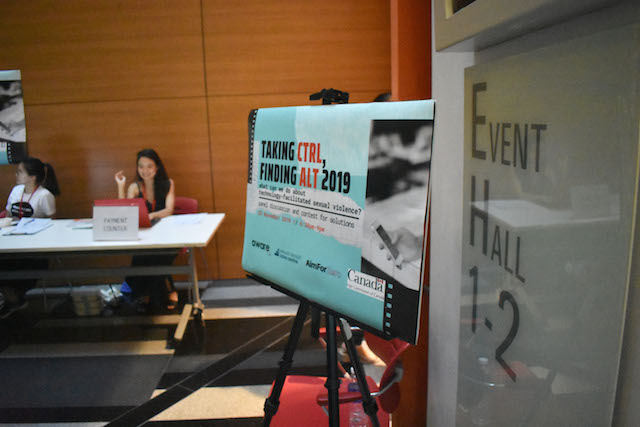
The second part of Monday’s event saw AWARE launching a contest in conjunction with the High Commission of Canada. “Taking Ctrl, Finding Alt: The Contest” invites members of the public to submit their ideas for projects to combat image-based sexual abuse. Proposals will be accepted via AWARE’s website (www.aware.org.sg/tfsvcontest) until 7 February 2020. Winning projects will receive a “kickstarter” sum of up to $6,000, as well as development support for a pilot phase over six months in 2020.
“Women are disproportionately affected by a range of unintended negative consequences enabled by technology,” said Canadian High Commissioner Lynn McDonald. “Canada is committed to promoting gender equality by addressing gender-based violence, which impedes women and girls from realising their full potential. We therefore are pleased to support this important initiative and look forward to collaborating with the contest winners.”
Find SACC’s 2017 report “Technology and Sexual Violence” here.
*This post was updated in 2020 to reflect more accurate numbers of TFSV cases seen by SACC. The numbers previously reported were: 46 in 2016 (out of 338 total cases), to 99 in 2017 (out of 515 total cases) and 124 in 2018 (out of 808 total cases).
Photographs by Kaspen Paraskakis Narayan.
Annex
Taking Ctrl, Finding Alt 2019: Panelists
● Monica Baey, advocate for sexual violence survivors
As a Communications student at the National University of Singapore, Monica Baey stood up for herself after an experience of sexual voyeurism, eventually driving a major shift in attitudes towards sexual violence. Monica was honoured with AWARE’s “Woman of Courage” Award at the 2019 AWARE Ball in early November.
● Amber Hawkes, Head of Safety Policy, APAC at Facebook
Amber Hawkes works with NGOs, academics and policymakers to improve Facebook policies, products, tools and resources to keep its community safe. Previously, Amber spent over a decade combatting human trafficking and online child sexual exploitation.
● Benny Bong, counsellor and Society Against Family Violence president
Benny Bong is a counsellor, lecturer and trainer. As director and principal consultant at The Family Therapist, he has a long history with working against violence in the home. He is a founding member and current president of the non-profit Society Against Family Violence. Benny received the AWARE Hero Award in 2011.
● Priscilla Chia, litigator and SACC volunteer lawyer
Lawyer Priscilla Chia’s practice focuses on commercial, public interest and criminal litigation, as well as non-contentious corporate advisory. Outside of her legal practice, Priscilla is actively involved in non-profit work with AWARE and other civil society organisations.
Technology-Facilitated Sexual Violence: Some SACC Cases
Case A: The client sent “nudes” to her previous partner, who promised to delete the images after receiving them. However, her intimate images were instead shared online without her knowledge. Friends and acquaintances sent her messages over various social media platforms to let her know that they saw the images. She told SACC that she has been struggling with suicidal thoughts ever since. She feels shame, regret, confusion and depression. She credits her daughter for helping her stay alive.
Case B: The client works in the same department as the perpetrator, who sends her unwanted sexual messages. She blocked him on WhatsApp, but he contacted her on Facebook; she blocked him on Facebook, but he contacted her on Instagram; then Skype. Eventually he took to sending her emails through his work email.
Case C: The client was harassed by a former intimate partner whom she met online. After she stopped seeing him, the perpetrator threatened to reveal her intimate images to others, including her current partner. He also continued to stalk her: He took her photo on the MRT without her knowledge, and at one point assaulted her. Even though she has blocked him on all platforms, she is worried that he will act upon his threats to release her photos, or show up to her house to physically hurt her. She is also hesitant to file a police report or take legal action, because the images were taken during consensual sex, and others have told her that this is her fault.
Case D: Without her permission, the client’s boyfriend uploaded videos of them having sex. She found out because two acquaintances approached her to inform her that they had seen the video. Her boyfriend told her that he did not know why he did it. The client agreed not to go to the police if he would help her to take the video down from the Internet. However, although he contacted several websites, only some of them have responded and taken it down. The client is increasingly paranoid about others seeing the video, which would have a serious impact on her professional and family life.






